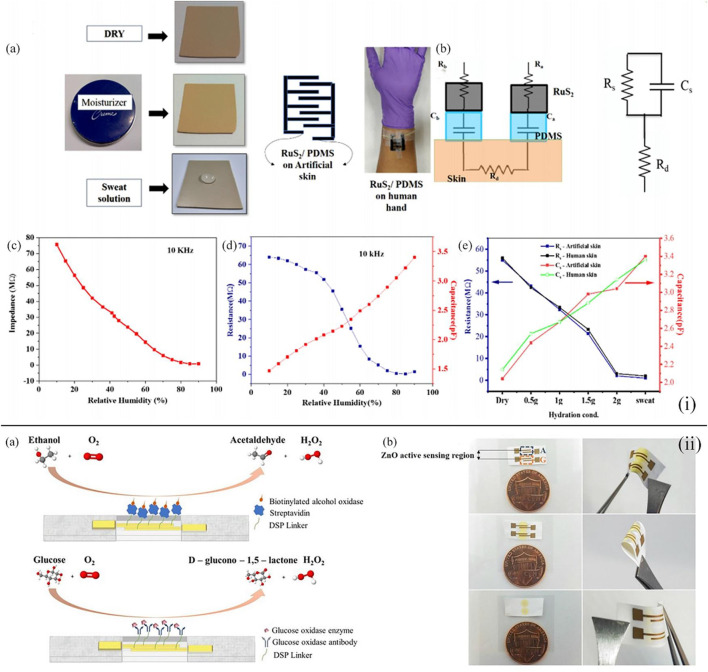FIGURE 3.
(i) (A) Different skin conditions for artificial skin and the sensor tied on the human skin. (B) Equivalent circuit representation of the designed RuS2/PDMS-based hydration sensor. (C) Impedance value detected at the increase in humidity conditions on artificial skin at an alternating current frequency of 10 kHz. (D) Capacitance and resistance as the function of the increase in relative humidity conditions when the sensor was tied on the human skin. (E) Capacitance and resistance values of the human skin and artificial skin at distinct hydration environments (Veeralingam et al., 2020). (ii) (A) Immunoassay with the ability of the combined monitoring of glucose and alcohol. (B) Sweat sensor array displaying fluid confinement in the active detection region, size comparison with one cent, and the flexibility of sensor (Bhide et al., 2018a).

